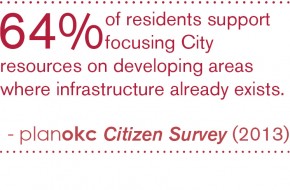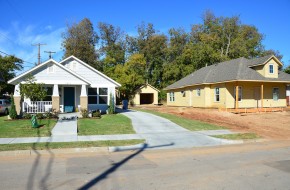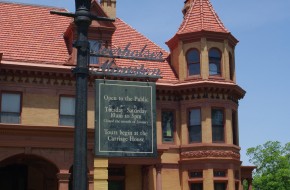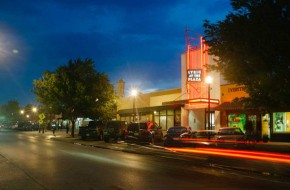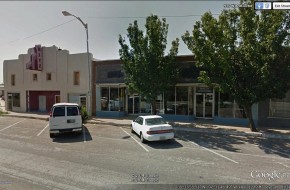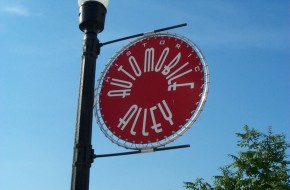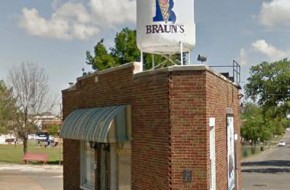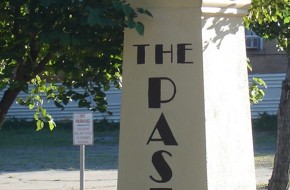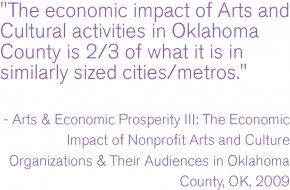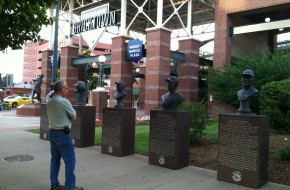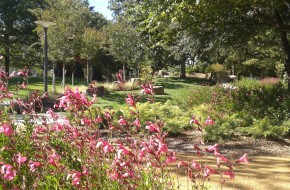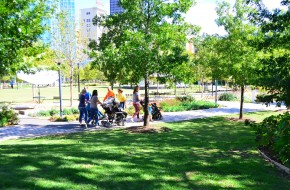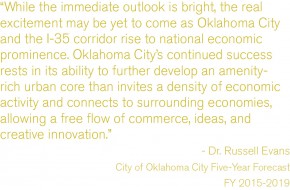The initiatives below relate to arts, culture, and preservation. Click on any initiative to view a full explanation and related policies.
We will preserve rural character and grow efficiently by managing the growth of urban development. Without careful phasing of infrastructure extensions and development in new areas, we will continue to use existing infrastructure inefficiently while incurring the higher costs of extending facilities prematurely; create land use conflicts with existing farms; and change the character of land for people who built homes or made other investments based on rural character.
Urban growth will occur in many areas, but these new growth areas should receive infrastructure as the market demands, with incremental utility extensions contiguous to pre-existing urban development. This will require designing and implementing an infrastructure management system, possibly establishing sub-watershed districts which would be opened to development as required by land availability or economic considerations. New basins would be opened to development when existing areas with full services reach a certain percentage of development. In the meantime, areas that can feasibly receive urban infrastructure in the future should be reserved for urban development through the Urban Reserve LUTA.
Infrastructure financing techniques should recognize both the need to manage and direct the geographic extent of development, and the need for partnerships between the public and private sectors to extend services and utilities. For example, the City could provide front-end financing for infrastructure in a specific growth area, reimbursed or offset by impact fees and special service district assessments calculated on the basis of the yield of the area.
We will reinforce the character and quality of existing rural development and provide the ability for some very large lot development in some areas which are unlikely to receive infrastructure in the short term. Oklahoma City has a substantial amount of rural residential development within its city limits. The integrity and rural character of this development should be respected as previous investments in infrastructure are efficiently used. These rural areas also have a significant population that requires convenience and commercial services. Land use policies will provide for limited commercial development to address these specific service needs. The Rural LUTAs specifically recognize that maintaining character, using infrastructure efficiently, and providing supporting commercial are priorities.
While we can plan for sound, gradual expansion of the city through the Urban Reserve LUTA, we should provide existing landowners with the opportunity to realize a reasonable development return on their land. We will consider innovative techniques like Build-Through Acreages, allowing rural density development on a portion of a parcel with adoption of an overall master plan that achieves urban densities when utilities are extended.
Click to expand policy information.
Revise subdivision regulations to include connectivity standards and guidelines that require greater street connectivity, and provide allowances for pedestrian and bicycle connections when street connectivity cannot be made.
Establish access management requirements that limit driveways on arterials and collectors and increase connections between uses to improve safety and traffic efficiency.
Change subdivision regulations to determine the number of entries into a residential development based on number of lots in order to improve connectivity of the roadway network and emergency response.
In order to accommodate desires for large-lot development in Urban Reserve areas, implement innovative techniques such as build-through acreages (otherwise known as shadow platting or ghost platting) that permit interim large-lot development of a site or a portion of a site with a master plan that achieves an overall future density target for urban development.
Prioritize and concentrate development where facilities, infrastructure, and services have capacity and in areas where the Police and Fire Departments are best able to respond. Guide the location and timing of development through the proactive and strategic installation of infrastructure.
Use one or more of the following methods to ensure infrastructure and facility capacities are adequate for proposed development:
- Ongoing master planning to determine the necessary water, sewer, and road infrastructure to serve development.
- An impact fee system that collects funds for specific areas as they develop and installs needed infrastructure in a timely manner.
- Use of special service districts to ensure appropriate levels of service, sufficient revenue, and timely installation of infrastructure and facilities for each district.
- Require developers to construct or fully fund infrastructure or other improvements needed to serve their development, with reasonable accommodation for future adjacent or nearby development.
- Require developers to wait until the City (or the State as the case may be) constructs the infrastructure needed to serve their development.
- For development proposed in areas not currently within one-half mile of existing water infrastructure, require a service area study to first be completed to determine the best method for providing water to the service area.
For development proposed in areas not currently within a sanitary sewer drainage basin, a drainage basin study should first be completed to determine the best method for sanitary sewer service.
Preserve existing rural residential character while pursuing optimal use of existing infrastructure in rural areas.
Ensure that development in rural areas is consistent with local design and scale and does not detract from the open character of the landscape.
Support limited amounts of commercial in rural areas appropriate to the needs of rural residents and passersby. Commercial uses in rural areas should be located in small clusters either on uninterrupted arterials or at freeway interchanges.
Adopt subdivision regulations that ensure new neighborhoods meet the basic needs of residents while supporting an efficient development pattern. Regulations should cover:
- Open space (passive and active),
- Demonstration of sustainable funding levels for common area and facility maintenance costs,
- Walkability and bikeability,
- Internal and external street connectivity,
- Block length,
- Integration of uses,
- Integration of a variety of home sizes,
- Integration of a variety of unit types, and
- Preservation of Environmentally Sensitive Areas.
Regulations could be based on a point scale to allow flexibility, while still requiring basic minimum thresholds be met.
New regulations should remove the existing requirement for development in Rural LUTAs to connect to water and sewer systems and establish a minimum one-acre lot size for lots with on-site sewer treatment.
We will work as a community to create a supportive environment based on the principles of engineering, education, enforcement, encouragement, and evaluation. The "5 E's" which the League of American Bicyclists views as the measures of a bicycle friendly community recognize that engineering (bicycle infrastructure) alone does not create a successful bicycle culture. The other components include:
- Education, making cyclists and motorists aware of the rules and practices of safety and etiquette and their mutual rights and responsibilities as road users.
- Enforcement, helping to ensure safety by enforcing rules that pertain to all users.
- Encouragement, executing events and programs that promote bicycling and its many benefits.
- Evaluation, establishing benchmarks and measurements to gauge the effectiveness of bicycling initiatives.
Click to expand policy information.
Create and implement a citywide bicycle and pedestrian master plan that addresses riders of all levels.
Incorporate preventive health care and wellness education into public schools, recreation centers, senior centers, and technical/trade schools.
We will set neighborhood development priorities by using quantitative evaluation criteria. Available resources are never sufficient to address the problems of struggling neighborhoods. Setting priorities and policy focuses can be addressed by an evaluative process that considers such factors as economic opportunities, educational performance, housing quality, access to commercial and other support services, public safety, and presence of community organizations and institutions. The process should consider positive neighborhood factors that can create the foundations for success, including:
- Existing support capacity from neighborhood associations, local service providers, and area businesses;
- Community institutions like parks, schools, churches, or community centers; and,
- Connections to surrounding neighborhoods.
We will expand rehabilitation and redevelopment programs to stabilize the physical fabric of neighborhoods. The physical condition of a neighborhood and its buildings is critical to its ability to function as a community. Residential rehabilitation programs should be expanded to both meet the needs of existing residents and serve future generations. Rehabilitation should focus items that directly affect health and safety, secure the basic building envelope, and add economic value to the surrounding area. Programs in which community development corporations acquire, rehabilitate, and either sell or rent units on a "turnkey" basis at moderate costs have been particularly effective in adding value, preserving housing, and introducing new owners and potential leaders into a neighborhood.
But housing rehabilitation is only part of the picture. Vacant sites and dilapidated buildings depress both property values and community momentum. Programs to accelerate the redevelopment of dilapidated properties should be tied closely to the priority evaluation process. Funds should be targeted to areas and projects that create a critical mass that in turn catalyzes private market investment and creates a self-sustaining community. Mechanisms like landbanks and land trusts have also proven effective in gaining control over vacant properties and returning them to productive use. Often, a high priority or visibility project at a strategic location can produce an unexpectedly powerful private reaction as neighbors gain confidence in their future.
We will create, enhance, and maintain community spaces where residents interact positively and advance the social fabric. Successful neighborhoods include spaces where people see and greet each other, and work and play together in a common enterprise. These spaces open a neighborhood, and increase the level of positive interaction that is the essence of a living neighborhood. Yet, hidden or neglected public spaces have the opposite effect, attracting nuisances and sometimes crime, and being scary or off-putting places that people avoid. Good community spaces can take many forms – a well-maintained public park surrounded and watched over by residents; a community garden; the median of a parkway; or a school or community center site.
Strengthening these community places begins with inventorying and analyzing their operations. This can be done in cooperation with neighbors and community organizations. Volunteer work, business participation, and other public and private support can provide the means to reclaim existing spaces and develop new ones, and to provide adequate resources for continued support and maintenance.
Facilities like community gardens and groceries are particularly attractive as community spaces because they are self-supporting; become natural and productive attractors of people, and address other key concerns such as access to healthy food. Efforts at a neighborhood level to secure sites and organize gardens should be expanded and educational institutions should provide technical help to gardeners. Public development incentives should have a special focus on attracting grocery stores to skipped over areas with viable consumer markets, and should encourage inclusion of public space in project design.
We will coordinate public infrastructure projects and community revitalization. In an effort to create tangible catalysts for revitalizing urban communities, the City will use the analysis described in this section as well as those located throughout planokc, to inform its capital improvements program.
Click to expand policy information.
Reverse the detrimental impact of vacant and abandoned buildings through the following efforts:
- Develop an Abandoned Buildings program geared toward a significant reduction in vacancies by creating incentives and/or penalties that discourage prolonged building abandonment and help the City to recoup the costs associated with vacated buildings. Use fees generated by this program to help fund redevelopment of abandoned buildings.
- Assess the feasibility of potential reuse options for dilapidated or abandoned buildings. Define and establish criteria to help identify buildings that are too far gone and/or too costly to feasibly rehabilitate, and consider a coordinated demolition program for those buildings.
- Seek changes in state legislation to enhance the City’s ability to maintain and improve its neighborhoods including:
- Laws which would speed up the demolition process for long-term dilapidated or abandoned properties that cannot be rehabilitated, and
- Laws which would strengthen the City’s ability to require property owners to rehabilitate or sell neglected, boarded-up properties.
Modify codes and/or regulations to create opportunities for more income diversity and mixed-income neighborhoods by allowing a variety of housing ownership and leasing arrangements, diverse housing sizes and types – including accessory dwelling units, carriage homes, lofts, live-work spaces, cottages, and manufactured/modular housing. Modifications should allow an increase the variety of ownership opportunities to include condominiums, ownership cooperatives (such as mutual housing associations, limited equity cooperatives, etc.) by identifying and removing regulatory barriers. Recommend improvements to protections for owners, developers, and lenders.
Priority should be given to projects that achieve efficiencies described elsewhere in planokc, such as dwelling units that are located to have easy access to each other and to other daily needs including jobs, recreation, and schools.
Maximize the use of all appropriate state, federal, local, and private funding for the development, preservation, and rehabilitation of housing affordable to a variety of income groups, including those that integrate low-income housing units in otherwise market-rate housing developments and support the creation and/or expansion of mixed-income communities.
Prioritize neighborhoods for revitalization and re-investment in order to reverse the decline associated with poor maintenance of public infrastructure and other property by using the following objective criteria:
- Low economic opportunity;
- Low educational attainment;
- Poor health outcomes;
- Poor housing environments;
- Low neighborhood quality; and,
- Existing capacity to support the revitalization efforts; and other important indicators.
Increase the City’s capacity to participate in targeted programs that strengthen neighborhood infrastructure and other assets.
Increase and/or re-assign City staff to support targeted neighborhoods and coalitions.
Integrate housing rehabilitation programs with neighborhood revitalization programs. These programs should include assistance to property owners to renovate the existing housing stock with improvements that reduce utility and maintenance costs for owners and occupants, conserve energy, conserve water, and reduce greenhouse gas emissions.
Identify, evaluate, and mitigate challenges associated with neighborhoods where housing values are rising quickly in response to public investment.
Establish new or expand existing financing methods and/or mechanisms available to new and redevelopment mixed-income projects in urban areas. These could include: direct investment of public housing funds, tax-increment financing, bonds, revolving loans, housing program funds and/or other proven public-private partnership models.
Create and/or enhance Community Development Corporations (CDCs) and Community Housing Development Organizations (CHDOs) to increase their capacity to provide mixed-income housing, especially in targeted infill areas.
Reuse brownfield, greyfield, and other vacant building sites to provide new opportunities for mixed-used and mixed-income housing.
Catalyze the rehabilitation of abandoned structures by amending codes to facilitate the adaptive reuse of existing buildings for residential use.
Develop a City program to rehabilitate or redevelop dilapidated properties, including a land bank to receive donated properties from property owners who can no longer maintain their properties.
Prevent concentration of low-income populations by providing housing opportunities for all income groups in targeted redevelopment areas of the city with a particular focus on mixed-income projects, especially on those projects that have a public funding component.
Create places and opportunities for neighborhood events that allow neighbors to interact.
Add legislative priorities for state laws to:
- Strengthen the City’s ability to obtain specific performance of property owners cited for code violations.
- Speed up the demolition process for long-time boarded properties that cannot be rehabilitated.
- Strengthen the City’s ability to require property owners to rehabilitate or sell neglected, boarded-up properties.
- Expedite the clearing of properties involved in probate.
Strengthen existing businesses and business districts within and adjacent to established residential areas. Promote the development of new businesses to provide additional jobs and higher income opportunities for nearby residents.
Strategically use subsidized housing programs along with other City services and programs to revitalize targeted areas of the city.
Quickly repair damage caused by vandalism, including graffiti, to minimize negative impacts on neighborhoods. Coordinate the efforts of existing programs, such as the Police Department’s Removal Unit, the Public Works Department’s Removal Unit, and Oklahoma County’s “SHINE” program to increase responses in targeted areas and expand the area which can be covered. Increase participation by the business community, such as donations of paint and time.
Establish a working partnership between the City, Oklahoma City Public Schools, Putnam City Schools, Western Heights Schools, and other metro area school districts and educational entities to help school districts complete a variety of non-educational (or indirectly educational) functions such as planning for and siting new schools, working on shared use issues, and redeveloping closed schools. The partnership should coordinate efforts to seek funding and appropriate resources to accomplish the following:
- Establish multiuse recreational and exercise facilities in schoolyards to increase opportunities for physical activity and strengthen the relationship between schools and neighborhoods.
- Establish a program to increase the number of community members and schools that make effective use of Senate Bill 1882 (effective 11/1/2012) allowing shared use of school facilities for recreational purposes.
Study the impact of vacant parcels on places and special districts, and determine how best to mitigate any negative impacts.
Rather than rely solely on federal CDBG funding, seek other sources to continue to support the Strong Neighborhoods Initiative and Neighborhood Stabilization Program in order to enhance their ability to reverse decline and create valuable places.
Create and implement small area plans for neighborhoods or districts with special strategic importance or complications related to development or redevelopment.
Encourage redevelopment and infill development on vacant, underutilized, and brownfield sites in urbanized areas.
Catalyze infill development on vacant, underutilized, and brownfield sites in urbanized areas by:
- Investing in infrastructure improvements;
- Improving multi-modal transportation networks;
- Improving parks and open spaces;
- Improving schools and other civic resources;
- Exploring innovative methods such as:
- A public-private partnership to purchase problem properties in target areas and build or rehabilitate homes while improving infrastructure and amenities
- An infill house plan program similar to Sacramento or Milwaukee
- Identifying and removing barriers to rehabilitation and/or replacement of residential buildings.
- Establishing a position in the City to facilitate medium- and large-scale redevelopment projects through the development process by guiding interactions with City departments, allied agencies, and utility companies.
Encourage the adaptive reuse of underutilized structures and the revitalization of older, economically distressed neighborhoods.
Prioritize maintaining the strength of existing commercial nodes and corridors over providing new areas for commercial development.
Continue promoting the re-use, redevelopment, and revitalization of low-performing or declining commercial areas.
Support diversity and integration of housing unit types and sizes in all land use typology areas in order to meet the diverse needs of households of different sizes, generational needs, incomes, and preferences. New residential subdivisions should achieve a mixture of housing types within a unified development.
We will develop a comprehensive strategy for the identification, retention, preservation, and revitalization of the city's historic, cultural, and architectural resources. Oklahoma City has nine locally designated historic districts, and four locally designated individual landmarks. Additionally, the city has many other historic and architectural resources, including nearly 100 properties and over two-dozen districts listed on the National Register of Historic Places, and many more potential local or National Register districts and landmarks. We need to improve our understanding of the extent and condition of our existing historic resources and consider the state of current practice and the impact of current development patterns, existing policies, and regulations on those resources. A comprehensive historic preservation plan will identify future preservation and rehabilitation focuses, and establish the basis for new and improved policies, review guidelines, and incentives to conserve our spectrum of historic assets in the built environment.
A historic preservation plan also has another significant function: increasing public awareness and knowledge of preservation and its role in community development. Educational programs should address three objectives:
- Increasing community understanding on the role of preservation and support for specific programs.
- Increasing knowledge and competence of property owners as they work on historic properties.
- Educating owners and developers on the process, potential markets, and available incentives for preservation projects.
We will create targeted incentives for preservation processes, aimed at potential obstacles. The historic preservation plan will recommend new tools to help deliver real projects. Some of these tools may include low-interest or forgivable loans, Tax Increment Financing, historic tax credits, preservation easements (the first of which was recently accepted), and expedited review processes. These strategies should focus on two general areas: financing gaps created by some of the contingencies of historically appropriate preservation and adaptive reuse, and concerns by developers about delays or uncertainties during the project development process.
We will revise and adopt new ordinances that ensure consistency in the review of projects that affect historic properties. All historic preservation programs involve the review of projects. Every case is different, and the review process must deal with difficult issues such as economic feasibility, level of deterioration, impact of change or even loss of a building on a neighborhood. Establishing consistency in this process ensures a strong program.
Click to expand policy information.
Maintain the traditional grid street pattern where it currently exists, reconnect it where possible, and keep alleys open and functioning. When improving older streets in neighborhoods, maintain original street widths and curb radii.
Maintain historical lot and block sizes where possible and appropriate.
Develop and adopt a city-wide Historic Preservation Plan to comprehensively address the identification, retention, preservation, and revitalization of the City’s historic, cultural, archeological, and architectural resources. The plan could be used to accomplish the following:
- Consolidate existing documentation on the City’s historic resources, including historic surveys, reports and studies, and existing local, state, and national designations in order to identify areas of recognized significance and areas that are under-/undocumented. Use this information to set priorities for additional research.
- Evaluate the impact of current development patterns, existing policies, and regulations on City-wide historic resources, and adopt new policies, guidelines, or ordinance amendments as necessary to address weaknesses, inconsistencies, and regulatory or financial disincentives for preservation.
- Identify buildings, sites, or districts for potential new Historic Preservation and Historic Landmark zoning, Legacy Resource designation, or for eligibility to take advantage of other tools including National Register nomination and related tax credits, preservation easements, and others.
- Develop policies, regulations, and guidelines for a City-wide review of all work impacting historic resources including, but not limited to, treatment of dilapidated or vacant and abandoned buildings, review of demolitions proposed outside of HP/HL designated areas, and review of the impact that new development has on historic resources located outside the City core.
Establish new incentives and raise awareness of existing incentives that stimulate the preservation and rehabilitation of historic resources. Incentives could include:
- Preservation easements, low-interest or forgivable rehabilitation loans, and Tax Increment Financing Districts for historic buildings, sites, and districts.
- Tools and practices for public/private partnerships to ensure the preservation and retention of top-priority historic resources whose deterioration or demolition would present an irreparable and highly significant loss to the City and beyond.
- Existing city, state, and federal tools and incentives for rehabilitation, including state and federal tax credits for certified rehabilitation.
- Expedited review process for projects involving infill sites.
Protect the unique character of National Register-listed properties or districts and local Historic Districts and ensure that development and redevelopment is compatible with historic resources and character.
Revise ordinances for design districts and design review procedures to ensure consistency in the treatment of historic properties, including the assessment of demolition proposals, the identification of historic or significant properties, and the consideration of the impact that the alteration or demolition of individual properties has on the context and continuity of the surrounding environment.
Coordinate with civic and professional organizations and relevant advocacy groups to:
- Develop improved programming and content that educates the public, key professionals, and city leaders about the economic and environmental benefits of historic preservation and adaptive reuse, including facts about retrofitting historic buildings to meet modern living and energy needs, costs of rehabilitation, and ways for older buildings to comply with accessibility and other code requirements.
- Develop resources for owners of historic properties, including hands-on training clinics or demonstration projects, a guidebook providing before-and-after examples of reused buildings in Oklahoma City, outreach and free assistance with the design review process, and a clearinghouse of information and design, labor, and materials resources for preservation, restoration, and revitalization.
Establish policy or adopt ordinance language to ensure that City-owned or controlled historic buildings are appropriately recognized, maintained and repaired, or rehabilitated. Potential methods to be considered could include:
- Attach a preservation restriction or easement to historic properties that are surplused by the City.
- Assess the historic status of City-owned or controlled properties in order to follow through with formal HP/HL zoning, National Register listing, or other historic designation as appropriate.
- Incorporate early and substantive review of city improvement projects to assess potential impacts on historic buildings, and adopt alternatives that minimize or eliminate the impacts when necessary.
We will reinforce the city's existing cultural districts and expand the network into new areas. The city's cultural districts have specific zoning and urban design regulations. They are "experience centers" that strengthen their surrounding neighborhoods. This program should be enhanced in two ways:
- Reinforcing existing districts through small-scale public realm projects (identifying graphics, sidewalk and streetscape improvements, wayfinding); cross-marketing; and integration into an "active loop," linking the nodes with pedestrian and bicycle routes.
- Expanding the program to new cultural districts, including the four pending districts and others that might be identified through the historic preservation plan and other neighborhood planning processes.
Ultimately, the culture districts should be viewed as, and evolve, into a connected network of attractions.
Click to expand policy information.
Ensure that public art is integrated into the planning and implementation for key initiatives such as Core to Shore, Project 180, MAPS 3 and other City projects as well as downtown, neighborhoods, cultural districts, and commercial districts.
Make it easier for arts and cultural projects to navigate the City’s design review, zoning, licensing, and permit processes.
Provide a centralized area(s) for artists to live and work (e.g. Paseo, Film Row) by targeting districts within the city that have become centers for all types (performing, visual, literary, etc.) of art.
Coordinate efforts to educate the public regarding the location of all public art installations and potential locations for future installations. Such efforts could include:
- Producing educational materials for each newly commissioned work in the City’s Public Art collection and making these available to the publiC.
- Providing educational materials detailing the locations of public art installations, such as walking tour guides, podcasts, physical markers, or web-based maps.
- Developing and adopting a Physical Master Plan to promote public art “districts” for key areas, including the Riverfront, downtown, the airport.
- Establishing a collection management system for public art to catalogue artist, location, condition, value and other details of public interest.
Identify the economic value of cultural resources in attracting tourism and reinvest a share of tourism revenue to sustain and expand these resources.
Showcase local talent by incorporating the work of artists into City activities such as wall displays, public information efforts, and special events.
Explore the implementation of the following efforts to increase the economic impact of cultural activities and arts programs:
- Efforts organized by Oklahoma City Office of Arts and Cultural Affairs:
- Formalize neighborhood-based cultural economic development plans
- Work with groups interested in establishing a vacant storefronts program with artists
- Establish a public art program to include local artists
- Coordinate a master list of artist opportunities
- Convene organizers of events and festivals to share knowledge and resources
- Coordinate use of publicly-owned space for use by artists.
- Efforts coordinated by Cultural Development Corporation of Central OK (CDCOK):
- Clarify roles among arts service entities
- Expand business skills training for artists
- Build capacity among nonprofits for fiscal/project sponsorship
- Strengthen partnerships and engagement with higher education resources
- Provide artist fellowships in partnership with philanthropies
- Evolve CDCOK into an economic development entity
- Efforts led by artists:
- Build a multi-disciplinary artist network
- Conduct an Annual Artist Summit
- Pilot art sales program based on the Community Supported Art model
- Recognize outstanding contributions by artists to the region
Use light fixtures and street furniture in the public right-of-way that complement established or evolving cultural or design districts.
Create a public outreach program designed to explain and promote the benefits of urban design principles and design review districts.
Develop and adopt a Cultural Heritage Plan with the objective of reviving, explaining, commemorating, and integrating the City’s cultural history through its cultural districts, landmarks, and facilities. The plan could be used to accomplish the following:
- Develop a cultural map of the City identifying the location of all cultural resources, landmarks, and cultural districts. Convert this information into maps and guides for residents and visitors so they may visit Oklahoma City’s cultural and historic sites using their preferred transportation method (walking tours, bike tours, river tours, transit routes, driving routes, etc.).
- Develop an effective and attractive cultural signage program, including kiosk type directories in pedestrian areas, coordinated and designed to direct residents and visitors to major art and cultural sites or districts in the City. The program may also include such items as markers and temporary seasonal or event-based banners.
- Examine opportunities to maintain and expand existing art and cultural facilities and to attract new ones. Coordinate a cultural needs assessment to determine future space needs, cultural variety potential, and potential sites to accommodate improvements.
- Protect and facilitate the enhancement of existing and emerging arts and cultural districts throughout the City to preserve the unique character of these diverse neighborhoods.
- Assess the accessibility of the City’s art and cultural facilities and resources to determine if improvements are necessary. Recommend ways to enhance access and linkages to art and cultural facilities and resources via new sidewalks, trails, and pedestrian amenities and/or expanded transit service.
Establish a program to develop place-making capacity in the city. The program should promote the economic and quality-of-life benefits of place-making investments and should:
- Establish and maintain partnerships between the City, the private sector, and “place management” organizations.
- Provide funding and City staff support for “place management” organizations.
Create specialized districts for large cultural or ethnic groups to enhance the diversity and perceptions of the city. Identify appropriate areas and create master plans with urban design guidelines specialized to the cultural history on display. For example, one special district could be themed for the Hispanic/Latino community. Such a district would include associated thematic infrastructure, amenity, design, public art, and streetscape improvements.
We will develop a Cultural Heritage Plan to preserve and promote heritage, arts, community development, cultural resources and understanding. This plan would be developed cooperatively by cultural groups, artists and institutions, potentially convened by the City. Its intention is not to supersede the planning efforts of any group, but rather to map significant areas, cultural resources, and a series of actions that can bring the arts, culture, and significant natural features closer to the overall community. Its special focuses include increasing linkages and mutual participation between cultural groups, the arts community, and the larger Oklahoma City community. It will reinforce the importance of historic sites and that expression of art that is most accessible to all because it requires no admission – public art.
Click to expand policy information.
Ensure that public art is integrated into the planning and implementation for key initiatives such as Core to Shore, Project 180, MAPS 3 and other City projects as well as downtown, neighborhoods, cultural districts, and commercial districts.
Make it easier for arts and cultural projects to navigate the City’s design review, zoning, licensing, and permit processes.
Provide a centralized area(s) for artists to live and work (e.g. Paseo, Film Row) by targeting districts within the city that have become centers for all types (performing, visual, literary, etc.) of art.
Develop and implement a Comprehensive Public Art Master Plan to:
- Establish goals and a framework for the rational development of a public art program for Oklahoma City
- Integrate public art into each of the City’s key development initiatives and community sectors with a plan for both permanent and temporary placement processes that facilitate new public art coordination and investment.
- Create an administrative and financial structure (with roles and responsibilities) to efficiently and effectively facilitate multi-departmental and multi-agency public art partnerships.
- Evaluate the current development/design/art review processes and make recommendations for improved and streamlined public art policies and procedures for both permanent and temporary public art (including murals).
- Involve the community in the process of public art selection to build consensus for the program.
- Include an educational component to reinforce the value of public art in the public realm for all ages and cultures.
- Provide a plan for maintaining the value and physical integrity of the City’s public art collection.
Coordinate efforts to educate the public regarding the location of all public art installations and potential locations for future installations. Such efforts could include:
- Producing educational materials for each newly commissioned work in the City’s Public Art collection and making these available to the publiC.
- Providing educational materials detailing the locations of public art installations, such as walking tour guides, podcasts, physical markers, or web-based maps.
- Developing and adopting a Physical Master Plan to promote public art “districts” for key areas, including the Riverfront, downtown, the airport.
- Establishing a collection management system for public art to catalogue artist, location, condition, value and other details of public interest.
Identify the economic value of cultural resources in attracting tourism and reinvest a share of tourism revenue to sustain and expand these resources.
Explore the implementation of the following efforts to increase the economic impact of cultural activities and arts programs:
- Efforts organized by Oklahoma City Office of Arts and Cultural Affairs:
- Formalize neighborhood-based cultural economic development plans
- Work with groups interested in establishing a vacant storefronts program with artists
- Establish a public art program to include local artists
- Coordinate a master list of artist opportunities
- Convene organizers of events and festivals to share knowledge and resources
- Coordinate use of publicly-owned space for use by artists.
- Efforts coordinated by Cultural Development Corporation of Central OK (CDCOK):
- Clarify roles among arts service entities
- Expand business skills training for artists
- Build capacity among nonprofits for fiscal/project sponsorship
- Strengthen partnerships and engagement with higher education resources
- Provide artist fellowships in partnership with philanthropies
- Evolve CDCOK into an economic development entity
- Efforts led by artists:
- Build a multi-disciplinary artist network
- Conduct an Annual Artist Summit
- Pilot art sales program based on the Community Supported Art model
- Recognize outstanding contributions by artists to the region
Protect the unique character of National Register-listed properties or districts and local Historic Districts and ensure that development and redevelopment is compatible with historic resources and character.
Develop and adopt a Cultural Heritage Plan with the objective of reviving, explaining, commemorating, and integrating the City’s cultural history through its cultural districts, landmarks, and facilities. The plan could be used to accomplish the following:
- Develop a cultural map of the City identifying the location of all cultural resources, landmarks, and cultural districts. Convert this information into maps and guides for residents and visitors so they may visit Oklahoma City’s cultural and historic sites using their preferred transportation method (walking tours, bike tours, river tours, transit routes, driving routes, etc.).
- Develop an effective and attractive cultural signage program, including kiosk type directories in pedestrian areas, coordinated and designed to direct residents and visitors to major art and cultural sites or districts in the City. The program may also include such items as markers and temporary seasonal or event-based banners.
- Examine opportunities to maintain and expand existing art and cultural facilities and to attract new ones. Coordinate a cultural needs assessment to determine future space needs, cultural variety potential, and potential sites to accommodate improvements.
- Protect and facilitate the enhancement of existing and emerging arts and cultural districts throughout the City to preserve the unique character of these diverse neighborhoods.
- Assess the accessibility of the City’s art and cultural facilities and resources to determine if improvements are necessary. Recommend ways to enhance access and linkages to art and cultural facilities and resources via new sidewalks, trails, and pedestrian amenities and/or expanded transit service.
Establish development standards and design guidelines for new cultural, civic, and sporting facilities that address site design, architecture, compatibility, pedestrian-orientation and access, landscaping, and the inclusion of public art.
We will increase awareness of and access to art and culture in the city. The Cultural Heritage Master Plan will identify access issues and strategies to address them. Possible directions include:
- Improvements to physical access by sidewalks, trails, pedestrian amenities, and transit services;
- Outreach programs that expand awareness and education on both the opportunities and benefits of the arts and culture in the city;
- Methods by which the City contracts with constituents can also be used to promote greater contact between arts institutions and grass-roots communities;
- Use of technology to provide greater access to public art and engage more people with its meaning;
- A process to fund, acquire, and locate significant works of public art.
We will incorporate arts and culture into City activities. The importance of the arts and culture in everyday life can be reinforced and encouraged through interpretive markers, public information efforts, special events and incorporating temporary art as solutions to urban issues, like vacant storefronts for art installations. These are opportunities that will showcase local talent and reinforce the economic benefits of arts and culture.
We will expand the City's public art program. The City's 1% for Arts ordinance is an important public investment to leverage private sector investment in public art throughout the City. Public art should continue to be included in City projects. Guidance and navigation can also encourage private development to include art in substantial developments as focal points in their developments. Public art, for example, could be a method of satisfying compatibility standards for adjacent land uses. The public art program should also include nationally used best practices to ensure high quality in the public realm.
We will help arts and cultural projects navigate the city's approval process. The volunteers and staff of cultural districts, neighborhoods, and arts organizations are often not familiar with the review and approval process and can find the experience daunting. By developing clear guidelines and working closely with these organizations, the city will reinforce the importance of arts and culture in the community while ensuring that projects meet established quality standards.
Click to expand policy information.
Enhance the safety and walkability of the sidewalk network through:
- Establishing a citywide bicycle and pedestrian master plan that includes an inventory of sidewalk locations and conditions, and priorities for enhancement.
- Implementing sidewalk improvements through future bond issues, CIP projects or other sources of funding as prioritized in the citywide bicycle and pedestrian master plan.
- Maintaining currency of the citywide bicycle and pedestrian master plan.
- Explore the feasibility of the City assuming responsibility for sidewalk maintenance.
Ensure that public art is integrated into the planning and implementation for key initiatives such as Core to Shore, Project 180, MAPS 3 and other City projects as well as downtown, neighborhoods, cultural districts, and commercial districts.
Make it easier for arts and cultural projects to navigate the City’s design review, zoning, licensing, and permit processes.
Provide a centralized area(s) for artists to live and work (e.g. Paseo, Film Row) by targeting districts within the city that have become centers for all types (performing, visual, literary, etc.) of art.
Develop and implement a Comprehensive Public Art Master Plan to:
- Establish goals and a framework for the rational development of a public art program for Oklahoma City
- Integrate public art into each of the City’s key development initiatives and community sectors with a plan for both permanent and temporary placement processes that facilitate new public art coordination and investment.
- Create an administrative and financial structure (with roles and responsibilities) to efficiently and effectively facilitate multi-departmental and multi-agency public art partnerships.
- Evaluate the current development/design/art review processes and make recommendations for improved and streamlined public art policies and procedures for both permanent and temporary public art (including murals).
- Involve the community in the process of public art selection to build consensus for the program.
- Include an educational component to reinforce the value of public art in the public realm for all ages and cultures.
- Provide a plan for maintaining the value and physical integrity of the City’s public art collection.
Coordinate efforts to educate the public regarding the location of all public art installations and potential locations for future installations. Such efforts could include:
- Producing educational materials for each newly commissioned work in the City’s Public Art collection and making these available to the publiC.
- Providing educational materials detailing the locations of public art installations, such as walking tour guides, podcasts, physical markers, or web-based maps.
- Developing and adopting a Physical Master Plan to promote public art “districts” for key areas, including the Riverfront, downtown, the airport.
- Establishing a collection management system for public art to catalogue artist, location, condition, value and other details of public interest.
Coordinate with art organizations, museums, and galleries to develop and offer an art outreach program to expose students to the various art disciplines.
Facilitate communication among the 23 school districts in order to develop more arts education opportunities for the children in our community.
Identify the economic value of cultural resources in attracting tourism and reinvest a share of tourism revenue to sustain and expand these resources.
Showcase local talent by incorporating the work of artists into City activities such as wall displays, public information efforts, and special events.
Explore the implementation of the following efforts to increase the economic impact of cultural activities and arts programs:
- Efforts organized by Oklahoma City Office of Arts and Cultural Affairs:
- Formalize neighborhood-based cultural economic development plans
- Work with groups interested in establishing a vacant storefronts program with artists
- Establish a public art program to include local artists
- Coordinate a master list of artist opportunities
- Convene organizers of events and festivals to share knowledge and resources
- Coordinate use of publicly-owned space for use by artists.
- Efforts coordinated by Cultural Development Corporation of Central OK (CDCOK):
- Clarify roles among arts service entities
- Expand business skills training for artists
- Build capacity among nonprofits for fiscal/project sponsorship
- Strengthen partnerships and engagement with higher education resources
- Provide artist fellowships in partnership with philanthropies
- Evolve CDCOK into an economic development entity
- Efforts led by artists:
- Build a multi-disciplinary artist network
- Conduct an Annual Artist Summit
- Pilot art sales program based on the Community Supported Art model
- Recognize outstanding contributions by artists to the region
Allow the reuse of vacant storefronts as exhibition space for local artists.
Provide incentives for private development projects that include public art.
Develop and adopt new standards to minimize the detrimental appearance of accessory utility equipment (i.e. transformers, cable cabinets, telephone cabinets, utility meters, valves, etc.) by integrating them into less prominent areas of the site design or by screening them with landscaping, artistic features, or architectural materials compatible with the primary structures. If not encouraged, artistic embellishment (creating urban ambiance with imaginatively designed/painted screens) should not be prohibited. Ensure that such facilities are situated so that they do not impede pedestrian access.
Develop and adopt a Cultural Heritage Plan with the objective of reviving, explaining, commemorating, and integrating the City’s cultural history through its cultural districts, landmarks, and facilities. The plan could be used to accomplish the following:
- Develop a cultural map of the City identifying the location of all cultural resources, landmarks, and cultural districts. Convert this information into maps and guides for residents and visitors so they may visit Oklahoma City’s cultural and historic sites using their preferred transportation method (walking tours, bike tours, river tours, transit routes, driving routes, etc.).
- Develop an effective and attractive cultural signage program, including kiosk type directories in pedestrian areas, coordinated and designed to direct residents and visitors to major art and cultural sites or districts in the City. The program may also include such items as markers and temporary seasonal or event-based banners.
- Examine opportunities to maintain and expand existing art and cultural facilities and to attract new ones. Coordinate a cultural needs assessment to determine future space needs, cultural variety potential, and potential sites to accommodate improvements.
- Protect and facilitate the enhancement of existing and emerging arts and cultural districts throughout the City to preserve the unique character of these diverse neighborhoods.
- Assess the accessibility of the City’s art and cultural facilities and resources to determine if improvements are necessary. Recommend ways to enhance access and linkages to art and cultural facilities and resources via new sidewalks, trails, and pedestrian amenities and/or expanded transit service.
Establish development standards and design guidelines for new cultural, civic, and sporting facilities that address site design, architecture, compatibility, pedestrian-orientation and access, landscaping, and the inclusion of public art.
Continue to create and enhance “big league city” amenities such as parks, public spaces, roadways, transit, cultural and recreational facilities, special districts, and gateways. Two specific possibilities for amenity enhancement include:
- Explore the feasibility of City-supported, high-quality landscaping along key transportation corridors as a means of enhancing the city’s appearance, image, and sense of place.
- Create gateways using public art features.
We will continue to create and enhance amenities such as parks, roadways, transit, cultural and recreational facilities, special districts, and gateways. The MAPS programs have generated tremendous momentum for our city, but we cannot rest on past accomplishments. Instead we must continue our efforts to create great places at neighborhood, citywide, and street levels. In the future, these amenities will include public spaces, street corridors, transit facilities, cultural and recreational attractions, special districts, and community gateways.
Connections like the Bricktown Canal connecting Bricktown and the riverfront, the SkyDance Bridge, the riverfront greenway and in the near future the modern streetcar and trails projects have been as important as individual destinations. Signature transportation corridors are also vital parts of the cityscape. To this end, the City will explore the feasibility of installing and maintaining landscaping and public art along key transportation corridors to enhance the City’s appearance, image, and sense of place. Features like gateways can mark the transition from one district to another, and help emphasize the distinctiveness of Oklahoma City's special districts.
We will build on the success of our special districts to attract residents and businesses. Downtown, Bricktown, Midtown, the Plaza, Deep Deuce, the Paseo, Stockyards City, Automobile Alley, Heritage Hills, and others are important districts that contribute strongly to Oklahoma City's sense of place and identity. Future districts like Core to Shore will contribute to Oklahoma City's collection of urban places. The City will continue to invest in features that make these existing and future places centerpieces of our community by catalyzing development, increasing land use diversity, building quality of life amenities, and promoting family-friendly features.
Catalyzing development. Urban housing has proven to be a staple of downtown and urban district revitalization. Residential development not only creates a market for more local services but also creates a comfortable environment that brings other people in from around the city and region. The City will continue to guide housing development to urban districts to increase activity and support demand for new retailing. Special focuses will include Downtown and surrounding areas and the new Core to Shore neighborhood. The City should also place a priority on establishing a signature retail development or a retail/housing mixed-use development.
Diversifying land use. Increasing land use diversity in urban districts will help attract and retain visitors and support development momentum. For example, Bricktown's first development phases concentrated on offices, bars, and restaurants. But the historic district has become more vital with nearby housing, retailing at different scales, and hospitality uses, and this type of diversification should accelerate. In special districts, City policy should attract a balance of retail, residential, employment, and recreational uses.
Investing in amenities and activities. The City can strengthen downtown’s and other districts' senses of place and increase activity by encouraging and investing in more public plazas, public art, parks, indoor recreation facilities, and arts and cultural facilities.
Building family-friendliness. We can help attract and retain a variety of households to downtown and other urban districts by promoting and enhancing them as family-friendly places to live and play. Attention to street design, land uses (particularly around the downtown school) and public safety can help promote this image.
We will establish a place-making program. The City will establish a program to develop place-making capacity in the city and promote both the economic and quality-of-life value of place-making investments. The program will establish partnerships and provide funding on a regular basis, including attention to small, neighborhood-scaled projects.
A significant part of this program is communicating the message of Oklahoma City's places to the outside world. This both benefits businesses directly through promotion and supports city marketing and talent recruitment efforts. The Chamber of Commerce and Convention and Visitors Bureau are major partners in this effort.
We will designate additional special districts. The City will foster more specialized districts for large cultural or ethnic groups to promote diversity and improve perceptions of the city. For example, Capitol Hill could grow as the center of an emerging Hispanic/Latino district, with appeal to people throughout the region. New special districts would include thematic infrastructure, amenities, design, public art, and streetscape improvements. Appropriate areas should be identified for special districts, followed by preparation of plans that establish design guidelines and strategies to capitalize on cultural meaning.
Click to expand policy information.
Provide tools and incentives for targeted housing and neighborhood revitalization through programs such as a housing trust fund, land bank, abatement of permit and connection fees, employer assisted housing, inclusionary housing development, tax abatements, credits or deductions, abatement of permit and connection fees, and an expedited review and approval processes.
Create regulations/standards/guidelines that focus on design and/or compatibility principles which are sensitive to the surrounding urban form, especially in areas that are stable or improving and whose character is well-established. These provisions should also help ensure compatibility between lower- and higher- intensity land uses.
Establish a program to develop place-making capacity in the city. The program should promote the economic and quality-of-life benefits of place-making investments and should:
- Establish and maintain partnerships between the City, the private sector, and “place management” organizations.
- Provide funding and City staff support for “place management” organizations.
Create specialized districts for large cultural or ethnic groups to enhance the diversity and perceptions of the city. Identify appropriate areas and create master plans with urban design guidelines specialized to the cultural history on display. For example, one special district could be themed for the Hispanic/Latino community. Such a district would include associated thematic infrastructure, amenity, design, public art, and streetscape improvements.
Promote the downtown area as an attractive place to live and play for all household types, including families with children by:
- Requiring human scale site and building designs
- Focusing on pedestrian friendliness
- Adding family-friendly public amenities including parks, open space, greenways, plazas, bikeways, public art, etc.
- Limiting noise and protecting privacy
- Ensuring new buildings and sites are designed to be attractive and to enhance safety and the sense of safety.
- Encouraging employment and residential uses in close proximity
- Encouraging or requiring a percentage of condominium or apartment units to be 2 and 3 bedroom units
- Encouraging “child-friendly” development near schools and discouraging uses that could be detrimental to schools’ viability
- Instituting on-street police officers on foot or bicycle to maintain “eyes on the street” and enhance public safety and security
Attract and retain young professionals to downtown and its environs to support and enhance place-making efforts and investments.
- Explore the possibility of the Greater Oklahoma City Chamber of Commerce contracting with the City to facilitate and promote civic engagement and social opportunities for young professionals.
Facilitate the development of housing in the Downtown, Bricktown, and Core to Shore areas in order to increase activity levels and demand for retail and amenities.
Strengthen downtown’s sense of place and activity levels by encouraging more housing, retail, public plazas, public art, parks, indoor recreation facilities, and arts and cultural facilities.
Increase land use diversity in Bricktown to attract and retain visitors and development momentum. Specifically, encourage more retail, office, and recreational uses rather than additional bars and restaurants, so that visitors of all ages and interests will be motivated to visit and stay longer.
Encourage the use of special service districts with enhanced levels of service.
Ensure adequate funds to maintain enhanced levels of service (including staffing) in places that have been or will be designated as special districts.
Initiate an effort to create and publicize a brand and image for the city. Examples of specific outcomes include:
- Coordinate with the Greater Oklahoma City Chamber to advertise the city’s quality of life to national and regional audiences during major events such as the NBA playoffs, and at other appropriate times and places, and in appropriate media.
- Overhaul of City logo (buses, police cars, streetcar)
- Overhaul of City Website
Increase tourism, publicize the city’s quality of life, and increase the city’s profile as a regional vacation destination by working with the Conventions and Visitors Bureau using the following strategies:
- Package vacations that highlight the city’s amenities and destinations.
- Conduct a tourism market study and plan to identify opportunities to increase visitation from in-state and out-of-state groups and households.
- Publicize information highlighting the city’s amenities, destinations and transportation options (e.g., Spokies, transit, walking tours, and river boat tours).
- Direct visitors (through maps, walking, biking, and river tours, and driving and streetcar routes) to Oklahoma City’s cultural and historic sites, and commercial districts.
Continue to create and enhance “big league city” amenities such as parks, public spaces, roadways, transit, cultural and recreational facilities, special districts, and gateways. Two specific possibilities for amenity enhancement include:
- Explore the feasibility of City-supported, high-quality landscaping along key transportation corridors as a means of enhancing the city’s appearance, image, and sense of place.
- Create gateways using public art features.
Create and implement small area plans for neighborhoods or districts with special strategic importance or complications related to development or redevelopment.
Identify priority areas where the City can maximize private investment by providing public infrastructure and amenities including:
- Transit;
- Parks, trails, sidewalks;
- Streets;
- Arts and cultural facilities.
Enhance Downtown Oklahoma City’s prominence by maintaining and increasing its role as the major business center, establishing it as a major urban residential center, and focusing on developing retail, office, entertainment, and arts and cultural uses.
Work to establish a critical mass of retail uses in the downtown area. A lifestyle center or mixed-use town center presents the most viable option for a major infusion of retail into downtown.
























